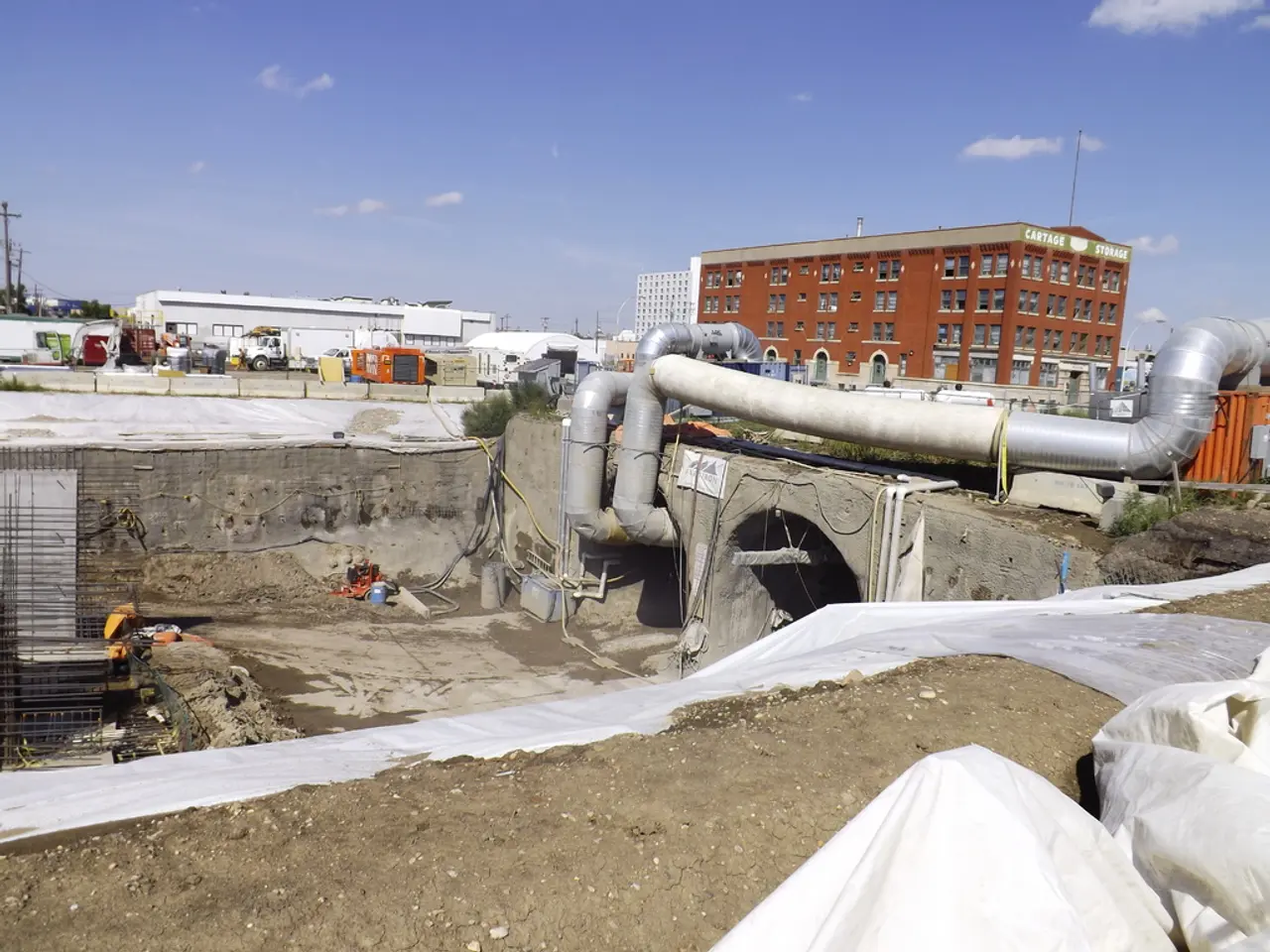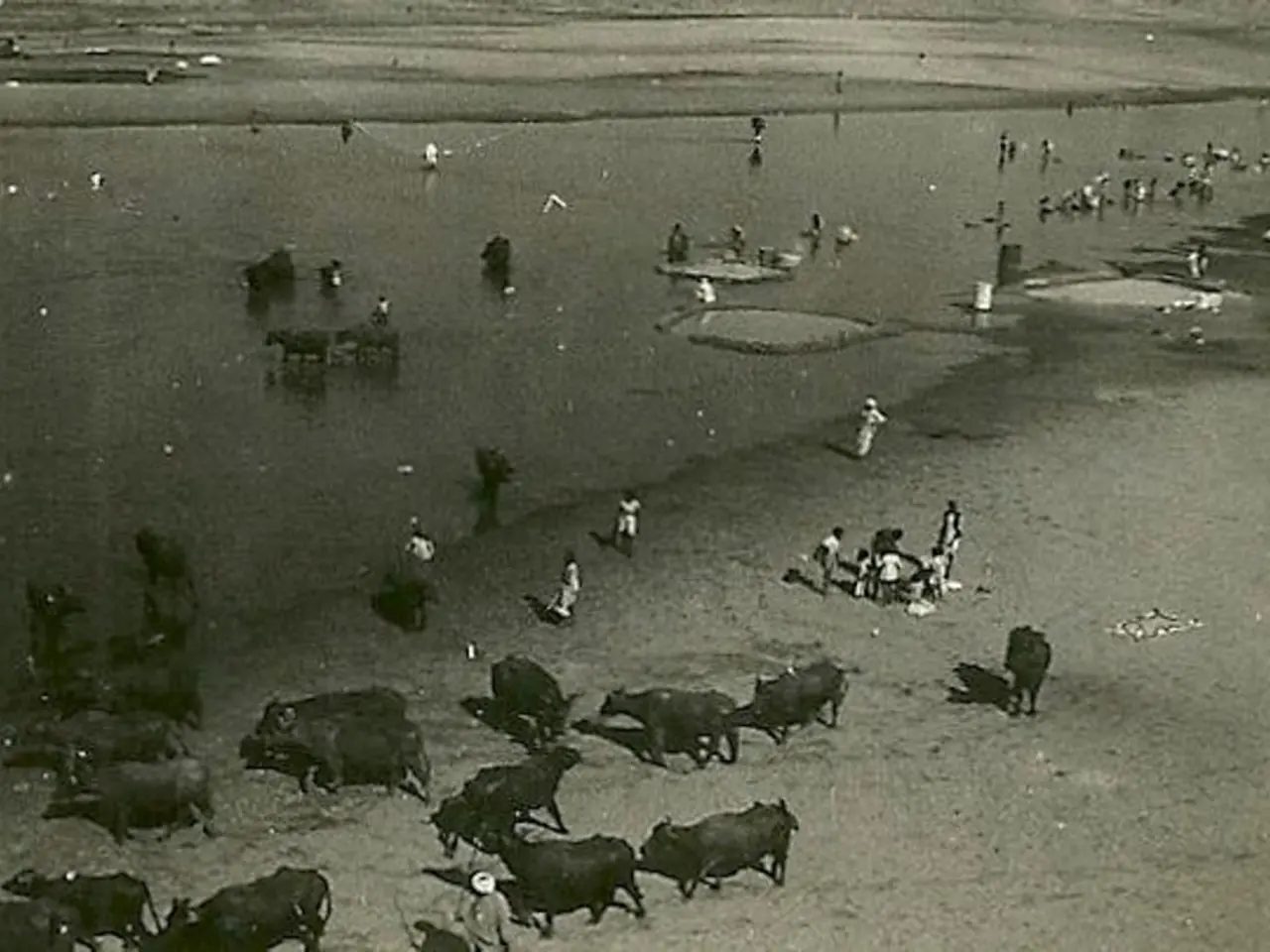Flood-related fatalities surpass 100 in Texas, with additional deceased individuals discovered
In the heart of Texas, a devastating flood disaster has unfolded over the past few days, leaving more than 100 people dead and several missing. The disaster has struck hardest in Kerr County, a region known as "Flash Flood Alley," where the Guadalupe River surged around 26 feet in just 45 minutes.
The tragedy has hit close to home for many, with at least 28 children and 27 people staying at Camp Mystic, an all-girls Christian camp, among the fatalities. At the camp, blankets, teddy bears, and other belongings were caked in mud, while windows in the cabins were shattered, apparently by the force of the water.
Louis Deppe, 62, is helping the parents of two missing children, who received a message saying they were being washed away before communication was lost. The White House has criticized claims that President Donald Trump's cuts to weather agencies weakened warning systems, but the lack of robust flood-warning systems in the region has been a topic of discussion.
President Trump is expected to visit Texas on Friday to assess the flood damage. Texas Senator Ted Cruz described the flooding as a tragedy that turned friendships into mourning, while Texas Governor Greg Abbott has stated that there is still a threat of heavy rain and potential flooding.
Climate scientist Daniel Swain attributes the problem to a failure of "warning dissemination," not timely forecasts from the National Weather Service. The region’s steep hills, rocky ground, and narrow riverbeds cause rapid responses to rainfall, leaving little time for warning.
Despite recognition of the risk, robust flood-warning systems were not in place in south and central Texas for several interrelated reasons. Kerr County, at the heart of Flash Flood Alley, had an outdated flood warning system lacking basic components such as sirens and river gauges.
Years of discussions about implementing more advanced warning systems, such as flood sirens and flashing lights, did not result in action. Local officials and community groups sometimes relied on informal "phone trees" to spread alerts, but this was not as reliable or scalable as modern technology.
Despite clear warnings from history and local officials, persistent funding denials and prioritization of more urbanized areas left Flash Flood Alley without the infrastructure needed to protect its residents. San Antonio mother Nicole Wilson launched a petition on Change.org urging Governor Greg Abbott to approve a modern warning network.
Volunteers are helping search through debris from the river, with some motivated by personal connections to the victims. At least 104 flood-related deaths have been reported across central Texas, and the death toll is expected to rise as search and recovery efforts continue.
[1] "Flood Warning Systems in Texas: A Case Study of Kerr County," Texas A&M University, 2019. [2] "Flash Floods in Texas: Challenges and Solutions," National Weather Service, 2020. [3] "The Missing Link: Flood Warning Systems in Rural Texas," Texas Observer, 2018.
[1] The devastating floods in Texas have brought to light the need for improved flood warning systems, particularly in areas like Kerr County, where a modern network could save lives.
[2] The region's history of flood disasters, coupled with the lack of robust flood-warning systems, has been a topic of discussion, with many pointing to the impact of funding denials and urban prioritization.
[3] In the heart of Flash Flood Alley, outdated flood warning systems are a concern, with systems often lacking essential components such as sirens and river gauges.
[4] The tragedy has sparked calls for action, with petitions urging Governor Greg Abbott to approve a modern warning network, aiming to reduce the risk of fatalities in future flood events.
[5] As the search and recovery efforts continue in the aftermath of the flood disaster, the need for urgent investment in environmental science, climate science, and improved flood-warning systems is increasingly apparent.








